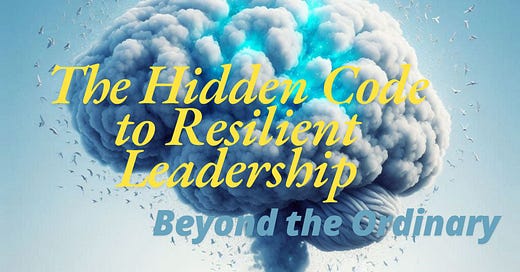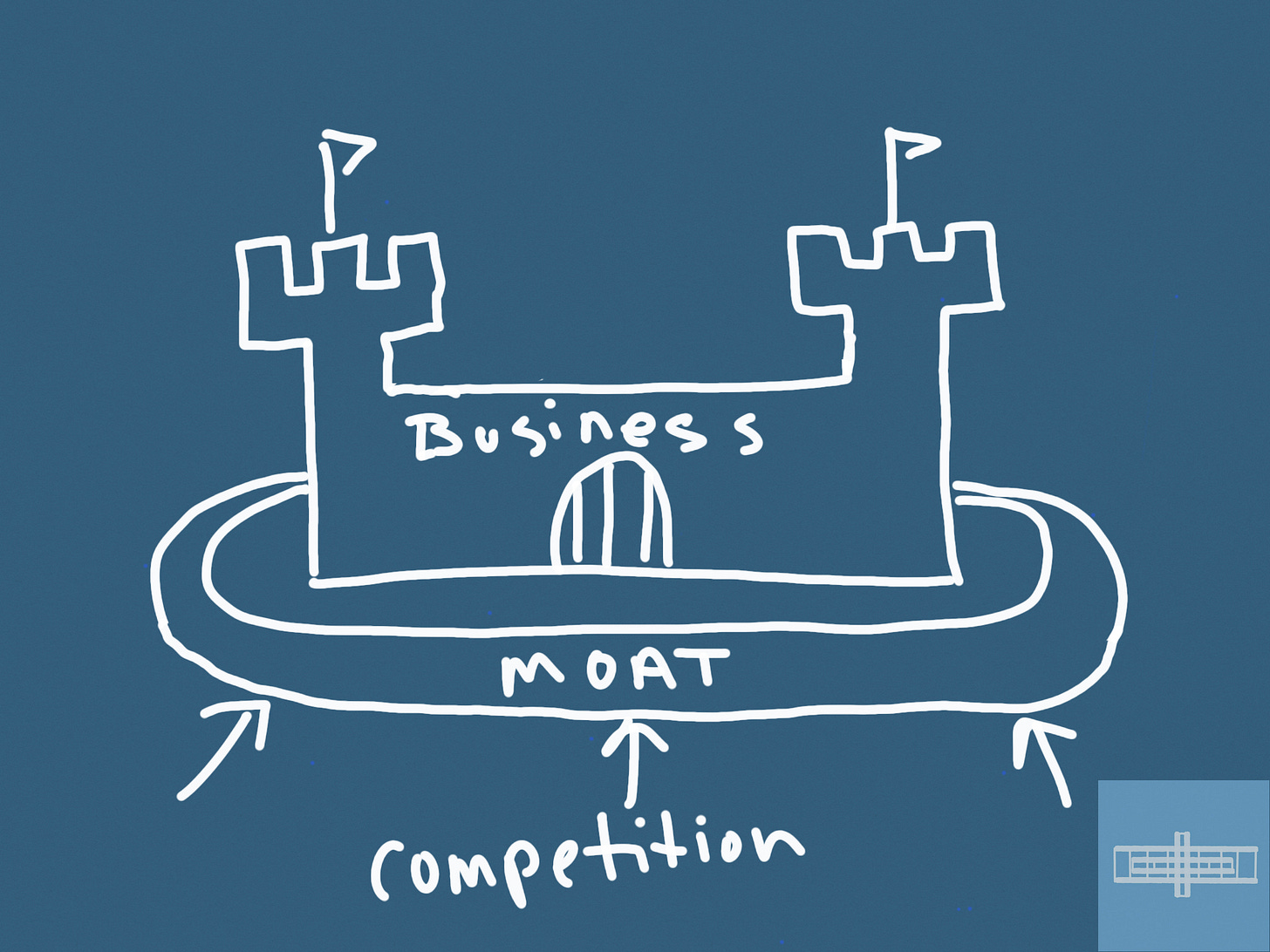Lead Like Charlie Munger: Mastering Mental Models for Peak Performance
Beyond the Ordinary: The Hidden Code to Resilient Leadership
"The big money is not in the buying and selling ... but in the waiting." — Charlie Munger
Hey there!
You made it—glad to see you back. We’re not here for small talk, so let’s cut straight to the good stuff. Today, we’re diving into the mind of Charlie Munger—no-nonsense, razor-sharp, and one of the most brilliant thinkers out there. If you’re ready to think smarter and lead with more precision (without the burnout), then you’re in exactly the right place.
We’re breaking down Munger’s disciplined approach, his mastery of mental models, and how BlueZone can learn from his philosophy to help you lead with sharper focus and intention. If you’ve ever felt the weight of constant decisions pulling you down, Munger’s insights will give you the tools to move past that and start making more strategic, powerful choices.
And keep an eye out, because next up is Sam Walton—the man who reshaped retail as we know it. But for now, let’s dive into the brilliance of Munger.
Ready? Let’s go!
Introduction
Charlie Munger, vice chairman of Berkshire Hathaway and Warren Buffett’s long-time partner, is more than just a brilliant thinker—he’s a master in leveraging cognitive frameworks and strategic patience. His ability to simplify the complex has not only shaped Berkshire Hathaway into a financial powerhouse but also redefined how we think about decision-making and long-term success. Munger’s philosophy, rooted in clarity, discipline, and the art of waiting, aligns seamlessly with the neuroscience-backed principles of the BlueZone work style. In this article, we’ll dissect Munger’s approach, revealing how his strategies can help leaders think smarter, make better decisions, and achieve peak performance—all without burning out. Ready to challenge the way you think about leadership? Let’s dive in.
1: The Power of Mental Models
"Don’t cling to extremes; it’ll turn your brain to mush."
Rigid beliefs? They’re like blinders in a maze—you see one route, and it’s usually the wrong one. Munger knew that great decision-making doesn’t come from locking in on a single path but from using mental models—frameworks that cut through complexity and guide you to the smartest moves.
Here’s where Munger drops the bombshell:
"To boost your cognition, you need a latticework of mental models. Then, hang your own experiences and others’ on that framework."
Imagine it: a mental spiderweb, each strand a different model. The more diverse, the stronger the web. This isn’t about stuffing your brain with more facts; it’s about connecting them. You’re weaving together personal insights, lessons from others, all creating a flexible cognitive powerhouse.
Munger’s latticework? Pure dynamite. Forget boundaries between disciplines—economics, psychology, biology—they all come in handy. The result? A mental toolkit that lets you tackle anything from any angle. This mental agility is what separates the merely good from the truly legendary.
Here’s Charlie’s secret: ideas and frameworks are tools. When a sharper, more effective tool comes along, swap it in. Why keep hacking with something blunt when you could slice through complexity like a hot knife through butter? Stay nimble, refine as you go, and keep that mental toolkit fresh and razor-sharp.
Neuroscience & BlueZone Connection:
What’s actually happening in your brain when you embrace Munger’s latticework? Sticking to a single, rigid system? It’s like locking your brain in a straitjacket—your creativity shrivels. But when you adopt multiple models, you activate the brain’s prefrontal cortex—the control hub for creativity, problem-solving, and strategic thinking. This part of your brain lives for diverse inputs; the more, the better.
And it goes deeper. Building a latticework of models strengthens neuroplasticity—the brain’s capacity to adapt and grow. Every time you draw from a different field or experience, you reinforce neural pathways, making your brain faster and more effective. In the BlueZone, this is like gold. Leaders with a diverse mental toolkit aren’t just more flexible; they’re more resilient. By reducing mental strain and pulling from a wider range of tools, you conserve mental energy, sharpen decisions, and steer clear of burnout. It’s about working smarter, not harder. Your brain’s in high gear, and your performance? Rocket fuel.
2: Search for Durability, Discipline, and Long-Term Thinking
"Search for durability."
Durability isn’t flashy; it’s pure power. In a world where everyone’s addicted to quick wins and instant results, the true flex is playing the long game. Durable decisions are about building something that lasts— a business, a strategy, or an investment. With durability as your focus, you’re not wasting mental bandwidth on every bump or distraction. Trends? Crises? Forget them. You’re here for the bigger picture.
The truth is, most leaders burn out because they’re constantly sprinting short-term races, endlessly reacting to whatever pops up next. Munger, though? He’s on a different level. He doesn’t chase every shiny object. His approach is all about patience, discipline, and making fewer but smarter moves. It’s not the number of decisions that matters—it’s making the right ones.
Neuroscience & BlueZone Connection:
This is where brain science meets brilliance. When you focus on durability and think long-term, you activate your prefrontal cortex—that brain powerhouse responsible for strategic planning and big-picture vision. This isn’t just about keeping stress in check; it’s about optimizing mental energy. Short-term thinkers constantly switch focus, plunging into decision fatigue. Every distraction, every minor crisis drains their brainpower, leaving them mentally fried.
Long-game thinkers, on the other hand, conserve that energy. Research shows that committing to long-term goals strengthens the brain’s default mode network—the zone handling deep reflection and problem-solving. In the BlueZone, that’s a game-changer. When leaders zero in on durability, they protect their cognitive bandwidth, reducing the need for endless pivots. They’re not whiplashing between every issue; they’re strategically set, making fewer, high-impact moves that keep them laser-focused and ahead.
The beauty of the long game? It shields you from burnout. While everyone else is busy fighting fires and putting out every minor crisis, durable thinkers are calm, focused, and in total control. They’re not just surviving—they’re thriving. In the BlueZone, that’s the secret sauce for leadership that goes the distance.
3: The Superpower of Focus
"He has the ability to focus on one thing at the exclusion of everything else. That is a superpower."
In today’s distraction-ridden world, focus is the ultimate superpower. It’s not about doing more; it’s about doing better. When you laser in on one thing—cutting through the noise, the buzz, the clutter—you tap into something few others do. This isn’t a skill for the faint-hearted; it’s trained, deliberate, and powerful. Munger knew it. His ability to lock in and break down complex ideas made him a problem-solving force.
Here’s the truth: focus isn’t a passing mood or motivational high. It’s a discipline, a conscious choice to enter flow, no matter what. True flow isn’t about zoning in just when it’s easy; it’s about consistently choosing to focus, especially when everything else is screaming for your attention.
One of my top-tier athlete clients nailed it in a recent session:
“Focus isn’t a feeling; it’s a choice. I train to ignore the noise, even when it’s pulling me in every direction.”
That’s the kind of disciplined focus Munger embodied—a laser-sharp commitment to what matters, shutting out the rest. As Ford, Ogilvy, or Munger would say, the magic is in
“keeping the main thing the main thing.”
That’s what separates the merely good from the truly legendary.
Neuroscience & BlueZone Connection:
When you focus, your brain shifts into peak performance mode. The prefrontal cortex—the brain’s command center for decision-making and problem-solving—takes over, spotlighting the task at hand while everything else fades to black. But here’s the kicker: multitasking? It’s the ultimate focus killer. It overloads your cognitive circuits, leading straight to burnout and inefficiency.
The science here is bulletproof. Studies show that deep focus activates the brain’s flow state, where productivity spikes, time warps, and everything just clicks. This is your sweet spot. It’s not about grinding harder; it’s about working smarter, channelling every ounce of mental energy into what counts.
In the BlueZone, focus isn’t optional—it’s the secret weapon. Leaders who master deep focus don’t just get more done; they get the right things done. By crushing distractions, they save mental energy and ensure they’ve got the reserves for high-impact tasks. It’s the difference between just surviving the day and absolutely crushing it. The more you train your brain to focus, the sharper and more efficient you become. That’s the real power: not burning out but thriving, making razor-sharp decisions with clarity and precision.
4: Take a Simple Idea to the Extreme
"Take a simple idea to the extreme." — Charlie Munger
There’s power in simplicity, but only if you’re bold enough to take it seriously. Most people love to complicate things—why? Complexity looks impressive, like you’re juggling 12 flaming swords at once. But remember: the more swords you juggle, the more likely you’ll get burned.
Munger saw through this. He knew simplicity isn’t just easier—it’s smarter. It’s the ultimate power play. Focus on one idea. Strip it to the essentials. Then push that idea to its absolute limit, because that’s where the real impact lies. Forget about having 50 mediocre ideas circling around; take one strong idea and run it so far into the end zone that no one else can catch up.
Look at any legendary business move, groundbreaking strategy, or personal breakthrough—it didn’t emerge from a mess of competing ideas. It was born when someone took a single, clear idea and went all in. Complexity? That’s just confusion dressed up in disguise. Simplicity? That’s where clarity, confidence, and razor-sharp execution live.
Neuroscience Tie-In:
Here’s how your brain plays a role. Your working memory—basically your brain’s notepad—can only handle so much at once. Overload it, and it’s like scribbling too fast to read a word. That’s what complexity does—it clouds thinking, making it harder to focus, harder to execute, and harder to succeed.
Simplify, though, and magic happens. Reducing complexity lowers cognitive load, giving your brain the bandwidth for sharper, deeper thinking. It’s like clearing fog from a windshield; suddenly, you can see exactly where you’re going. Neuroscience backs this up—when we simplify tasks, our brains work more efficiently. This isn’t just faster; it’s smarter.
Ever notice those breakthrough ideas in the shower or while driving? That’s your brain revelling in simplicity. No noise, no overload—just space to think. This taps into flow, the brain state where focus sharpens, and everything else fades. And the more your brain gets used to flow, the better you become at staying in it. Simplicity is the shortcut to this mental state.
When you streamline a simple idea and go all out, your brain isn’t bogged down by distractions. It’s free to operate at full throttle. That’s how leaders go from good to legendary. Instead of juggling those flaming swords, they’re launching a single golden spear right into the heart of the target.
This is strategy, pure and lethal. You don’t need a string of half-baked ideas when one well-executed idea can change the game. In the BlueZone, you win by slicing through the noise, shedding the clutter, and executing on what truly counts. Simplifying doesn’t make you weaker—it makes you lethal.
"Ready to Think Like Munger and Lead Like a Legend?"
Munger’s approach is timeless and adaptable. If you’re ready to integrate his wisdom into your own leadership style and eliminate burnout, join my exclusive 3-hour workshop where we’ll explore Munger’s strategies in-depth. We’ll combine them with neuroscience-backed techniques to help you lead smarter, not harder, and step into the BlueZone—the future of leadership starts here.
Keep reading with a 7-day free trial
Subscribe to Engaged Leadership to keep reading this post and get 7 days of free access to the full post archives.









